FREE Standard Shipping On All Orders $100 or More!*
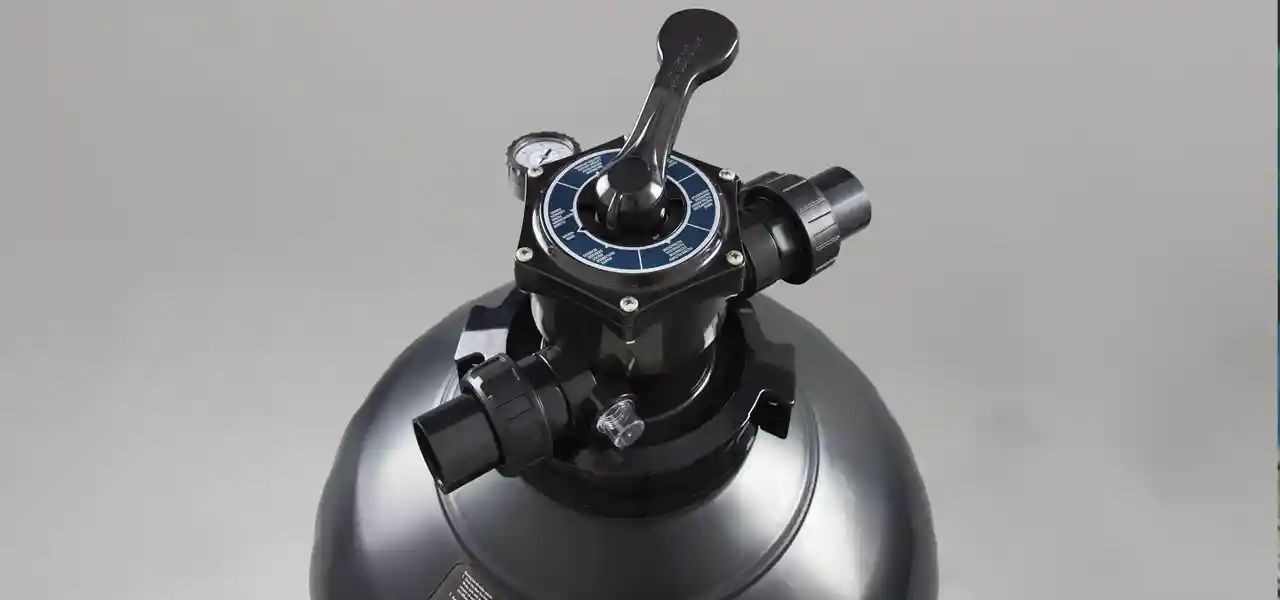
Multiport Valve Settings Demystified
Today we look at Multiport Valves, defining the valve functions, or valve settings to know which to use, and when and why to use them.
Multiport valves are called multi-ports because inside the valve, there are multiple ports that allow the water to move in multiple directions. Pool water always enters the valve thru the "PUMP" port, but depending on the handle position, the water enters the filter tank through the top bulkhead or bottom bulkhead. Also dependent on the handle position, water exiting the valve either uses the "RETURN" port or the "WASTE" port.
1. The FILTER Position:

This is the normal setting for your filter valve. Water is pulled from the pool by your pool pump and pushed into the “PUMP” port of the multiport valve where it enters the filter tank. On sand filters, water enters at the top of the tank, and for DE filters, water enters at the bottom of the tank. After passing through the filter media, the water exits the tank again into the multiport valve, leaving through the “RETURN” port, and back to your pool.
Another use of the “Filter” setting is while vacuuming the pool of debris large enough for the filter or pump basket to remove. You will want to use the next setting if vacuuming dead algae, silty mud or flocculent treatments, or other such fine filter clogging material.
2. The WASTE Position:
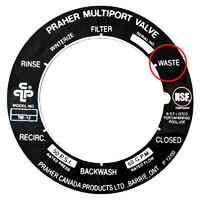
The most common scenario in which you would use a multiport valve “Waste” setting is when lowering pool water levels. Waste diverts the water pumped in from your pool from the filter and sends it directly out of the backwash hose, without even entering the filter tank. It's one of two 'Bypass' settings on a multiport valve.
The other common instance in which you would use the “Waste” setting is when you are vacuuming debris that is too fine for the filter media to capture. Have you ever vacuumed your pool on the “Filter” setting only to notice a few hours later that a fine, almost sand-like sediment has collected at the bottom of your pool? This is not uncommon for sand filters, which can have trouble trapping very small particles.
3. The CLOSED Position:
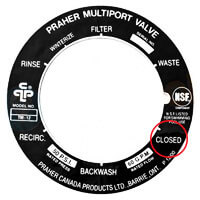
Simple enough, "Closed" is a position that won't let water enter the valve, and is the most rarely used position of all. The pool pump should never be turned on when the MPV (pool guy shorthand) is in the 'Closed" position, something could blow out!
The "Closed" position is sometimes used when blowing out suction lines during winterization, to direct air flow back to the pool. It could also be used to stop water flow into the tank for filters that are below water level. In both cases however, there are usually other valves that can be used to accomplish the same thing.
4. The BACKWASH Position:
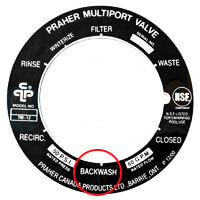
The “Backwash” setting reverses the flow of water in and out of the filter tank. During normal filtration, on the "Filter" setting, water moves through the filter in one direction - top to bottom for sand filters, and bottom to top for DE filters. When the MPV handle is moved 180° to the "Backwash" position, water flow is reversed as it enters and exits the filter tank. And, when the water leaves the filter tank and re-enters the MPV, it is directed out the "WASTE" port, instead of the "RETURN" port.
Backwash a filter when the pressure gauge reads 7-9 psi above the clean operating pressure. Run the pump for 2-4 minutes, discharging through a backwash hose until the water in the sight glass, or at the end of the hose, is no longer dirty or cloudy.
5. The RECIRCULATE Position:

The “Recirculate” setting is another bypass setting like "Waste", where the water does not enter the filter tank at all. After the water enters the MPV it makes a quick U-turn, and exits the valve out of the "RETURN" port, returning to the pool unfiltered.
The best use of the "Recirculate" position is when your pool filter is broken, leaking or otherwise cannot be used. In many such cases, the "Recirculate" position will allow you to at least circulate and chlorinate the water, to prevent stagnation and algae, until the filter can be repaired or replaced. This position may also be used when blowing out the lines, to avoid unnecessary high air pressure inside the filter tank. "Recirculate" is also used when adding Alum or other flocculents to improve water clarity.
6. The RINSE Position:
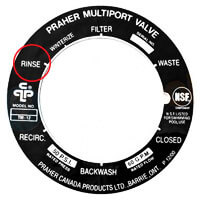
If you have ever vacuumed your pool spotlessly, and then after backwashing, sent a cloud of dirty water shooting into the pool, we have an app for that - the “Rinse” setting on a multiport valve. This position moves water through the filter tank in the normal direction (top to bottom for sand, bottom to top for DE), but when the water re-enters the MPV, it is directed out the WASTE port, not RETURN.
The "Rinse" position is used after backwashing a sand filter, to flush out or rinse the sand bed of remaining dust particles. 15-20 seconds is all that is needed to re-set and rinse a filter sand bed. DE filters with small holes in the grids or cracks in the manifold may also benefit from a rinse after backwashing, but outside of that, "Rinse" is not normally used after backwashing DE filters.
7. The WINTER Position:

The “Winter” or Winterize setting is used when it’s time to close your pool for the season. You will notice that this position is not actually a position at all, but is a location in-between two positions - there is no groove to lock the handle in place. What the winter position does is to 'prop-up' the valve diverter (aka rotor or footpad), raising it above the 'multi-ports' inside of the valve.
In this position, with the internal spring compressed, the diverter remains in a suspended position all winter, held 1/4" above the valve body ports. This allows space for any water trapped inside the valve to expand into ice during winter, without cracking the valve body.
Multiport valves are available in top mount design with flange attachment for sand filters, and in a side mounted design with bulkhead unions, for sand and DE filters.
Multiports are full featured, but may require multiport valve repairs from time to time. We have a full selection of multiport valve parts, and filter valve rebuild kits, containing gaskets, o-rings and seals.
One more TIP: Be sure to always shut off the pump before turning the MPV handle. Changing positions while the pump is running can damage the valve, or cause something to blow out under pressure.